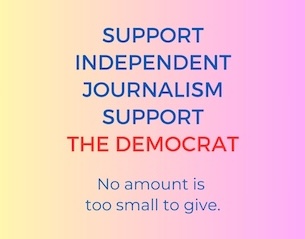- More
- Has the outbreak of COVID-19 created an emergency for UBI?
Has the outbreak of COVID-19 created an emergency for UBI?
With millions of workers rendered unemployed and forced to walk back to their respective states with grave uncertainty over their future, the developing economies are set to bear the maximum brunt of the COVID-19. For India, consumption, which accounts for 60% of its GDP is negatively affected thus causing a negative demand shock. In such

With millions of workers rendered unemployed and forced to walk back to their respective states with grave uncertainty over their future, the developing economies are set to bear the maximum brunt of the COVID-19. For India, consumption, which accounts for 60% of its GDP is negatively affected thus causing a negative demand shock. In such times, should developing economies start implementing cash transfer programs to get the economy back on track in the post-COVID-19 era?
December 2019 marked the start of what has now become a global pandemic threating millions of lives – COVID-19 or more commonly known as coronavirus. With the outbreak of COVID-19, future for developing economies looks uncertain. Some epidemiologists fear that almost 50% of the world population will contract the virus. Given the 2% mortality rate, they argue that around 78 million people will be dead due to the virus – this is equivalent to slightly less than the total population of Germany. Now, although the large chunk of people might probably be retired people, this is still a serious loss of human capital. These are indeed hard times!
Now, as a student of economics, as much as I am tempted to write about the possible economic impacts of COVID-19, I find myself in a situation where I have fallen short of words. This is mainly because of the sheer increase in what was already an uncertain world before December 2019. As I write this article, the global fatality rate of the disease has reached 5.9%. For developing economies such as India and Brazil, it stands at 2.8% and 5.6%. The reason why these economies will bear the maximum brunt is very intuitive – most of the workers in these countries are employed in the informal sector where payment is mainly through cash and low-skilled workers essentially survive on wages. With no jobs and uncertain future, their main source of income is cut-off. Ergo, this leads to a steep fall in their consumption expenditure. This makes sense! The World Economic Forum estimates that the outbreak will plunge 12 million into poverty. This is certainly a worrisome news for India’s SMEs as 83% of workforce is employed by the unorganized sector. This increased poverty will have deep psychological impacts leading to depression and anxiety, which will further negatively affect the labour supply.
However, it is not just this class that will face difficulty in meeting their consumption needs. We need to understand that in an economy like India, where we already have issues such as income inequality, the market also faces heterogenous demands from the consumers. The consumption shock will further manifest uniquely as consumers change their behaviour post-pandemic. Most of the urban class indulges into what economists like to call as “social consumption”. It includes consumption such as having social lunches, watching football matches, clubbing, etc. One common element in all these activities is that you are surrounded by a group of people. Despite of all the precautions that one might take, it is still possible that you may get infected. Add the absence of vaccine to it and you understand how reluctant people could be towards increasing their consumption – at least till a vaccine is developed.
So, it is clear that a huge chunk of Indian population will suffer from a steep fall in their average incomes as unemployment soars to a massive 23% as per CMIE. In such times, it is easy to quickly look at the monetary policy and hope that it comes to save the day. However, to combat a crisis such as this, monetary policy alone is not enough – what we need is an optimal blend of monetary, fiscal, and health policies. For each economy, this “blend” may differ. Another two reasons why monetary policy alone will not be enough is that policies, almost everywhere in the world, are operating at their effective lower bounds. Secondly, even if rates are lowered, producers and investors are simply not confident enough to invest.
Governments need to step up and increase their spending and not be afraid to run budget deficits. Italy, for instance, has already requested the European Commission to ease up their fiscal targets. This will not only put money in the hands of the needy, but most importantly, it will increase the confidence of firms and public and cushion the impact of the demand shock. In such times, regular cash transfers to the poor seems like an – although with its own challenges – an essential program, say Nobel Laureates Abhijeet Banerjee and Esther Duflo. The idea is simple. Target the needy section of the society and provide them with cash transfers, which will ensure that they meet at least their survival needs. In the post-COVID-19 era, when economy is facing an uphill battle, such program will ensure that poor do not die of hunger and can help in pumping up consumption.
As mentioned, it has its challenges. One main challenge in implementing such a program is how to accurately target the needy sections of the society? Should we simply give money to everyone or should we restrict it to only those who come below the poverty line? The latter seems like a better option for a country like India considering that if such a program is to be implemented, it will put massive strain on the fiscal authorities. So, until we get a robust evidence on its impacts, limiting it to only the poor seems like a safe bet. Transparency too can be ensured as almost every citizen in India possesses the Aadhar card (1.25 billion people have Aadhar card). Aadhar card information can be exploited to identify the beneficiaries and transfers can be made through their Jan Dhan accounts.
A sceptic person (myself included) might say that it is easier said than done, which is true. To target accurately, we need to identify poor from every corner of the nation. This can be an extremely expensive affair. Recently, in 2009 and 2011, Pakistan and Indonesia – two nations which are much less populated than India – incurred a cost of US$60 million to conduct a national level survey to identify the beneficiaries for their government schemes. Now, simply imagine a similar survey for second most populated country in the world. This is indeed a major issue and perhaps a reason why such a scheme hasn’t come to fruition in India. Another common argument against such a scheme is that simply giving money to the poor might make them less motivated to seek jobs and increase dependency on government. In long-term, this is very much a distinct possibility even though current empirical evidence doesn’t point to this – mainly because the evidence is concerned to short-term studies.
Another potential problem, as is argued by some, is that to implement such a program in India on a national scale, even if it was a targeted program, the government may need to stop some ongoing public benefit program to create enough revenue for minimum cash transfer program. Also, as with any policy, there are lags attached to it, i.e. the effect will be evident after a certain period of time. Therefore, the real question is, how beneficial could the program be to stop the benefits that people are enjoying from the ongoing program. Clearly, the government will have to make a calculated decision.
As far as effects of these cash transfer programs is concerned, there is robust empirical evidence, which shows the positive short-term benefits of cash transfer programs. Research done by Banerjee et al. (2019) and Bouguen et al. (2019) clearly suggests that cash transfer programs increase average earnings of the poor and educational attainment. Overall, it is most likely that these programs will help in alleviate poverty and increase the quality of life of the poor – something which is much needed in such hard times. Lessons from the Madhya Pradesh pilot project which are already included in the 2016-17 Economic Survey will provide an excellent blue print to develop a nation-scale action plan.
The NDA government has the clear mandate in India and is in much better position to implement such a program successfully – all that is needed is strong political will. Mistakes can be made. After all, implementing such a massive program in the largest democracy in the world is not an easy task. However, that does not mean that the government delays the action. Decisiveness and meticulous planning will be key in getting the economy to roar again.
For further reading to increase your knowledge, please look for following resources. These are some resources, which I feel are important. However, please feel free to make suggestions.
Economics in Times of COVID-19
Universal Basic Income in the Developing World
Using Randomized Controlled Trials to estimate long-run impacts in Development Economics
Good Economics for Hard Times – a book by Abhijeet Banerjee and Esther Duflo
0000











